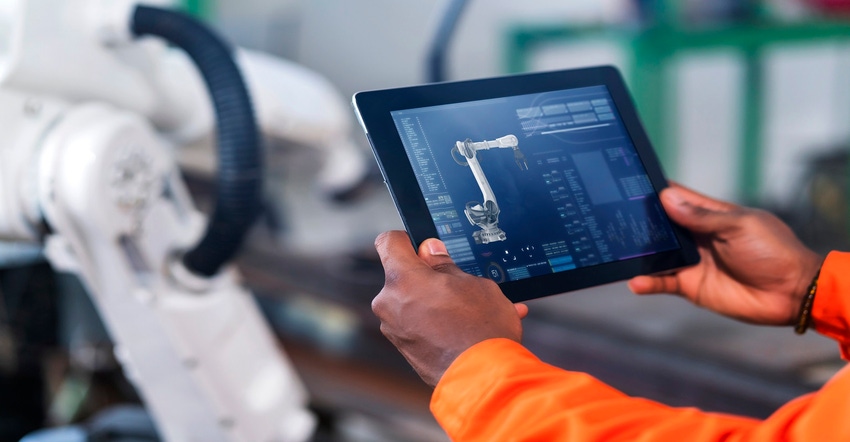AR and Manufacturing Go Hand-in-Hand
Manufacturers are using augmented reality to improve productivity by providing quality checks, ensuring safety protocols, and streamlining communications.
September 5, 2023

Kelly Peng, CEO and founder of Kura Technologies
Through a combination of digital and audiovisual elements laid over the world around us, augmented reality (AR) is an increasingly powerful tool in manufacturing. As more manufacturers invest in human and machine interaction and as leading manufacturers implement automation to handle simple and repetitive tasks, there exists a more compelling argument for adding AR to the mix.
The first industrial AR applications on mobile devices have since shifted to hands-free wearables like head-mounted displays or smart glasses. Now has never been a better time to start implementing AR into your manufacturing workflows; this article details how manufacturers can use AR in their day-to-day workflows to increase productivity, improve performance, and keep production to the highest quality standards.
AR on the Floor
AR, when combined with object recognition capabilities, is instrumental in helping workers find tools, locate a vital production item, or recall the next step in a task. This is especially useful in scenarios where a workplace sees high turnover rates or needs training assistance. Rather than use man hours for these tasks, AR can assist with methodology or orientation to guide the worker through the next step.
This is a reiterative process as well; tools like this can also remind skilled workers how to do tasks they learned years ago but haven’t had to execute in a while or offer a refresher course on tasks they do infrequently. AR can even guide a user through all the steps of a production process from start to finish, cutting down on delays due to new employees or people unfamiliar with certain workflows.
Safety and Quality Control
In manufacturing, few things are more important than safety. AR can detect environmental dangers or defective equipment faster than the human eye – and can alert human beings about the danger and the potential impacts. This saves time and keeps everyone on the floor safe from equipment that might malfunction.
In the same vein, AR can point out when a product is defective or when an error in the production process is occurring or is about to occur. Advanced AR hardware like glasses equipped with 3D cameras can monitor the quality of the item being made and can preemptively alert people on the production line of the errors. As a result, manufacturers can get everything right the first time, saving money on wasted materials.
Advanced tracking software is one of the most popular uses of AR in this particular application. By creating a 3D, fully immersive virtual counterpart of equipment that pairs with live use data and analytics, manufacturers can make smarter, safer, and more cost-effective decisions around the critical systems they use daily. All of this happens through live overlays that don’t require anyone to work hands-on with the equipment.
Improved Communication
All too often, when equipment in factories breaks or shuts down, operations might come to a grinding halt until the right person to fix the problem is notified and dispatched. Sometimes this even means the equipment’s designer or architect has to fly out from some international location to fix a problem only they know how to identify and address.
This isn’t the case anymore, thanks to AR. With wearable AR, the person needed to fix the mechanical failure can be virtually transported to the site in seconds and can point out the problem, guide others through fixing it, and offer longer-term solutions to ensure the error doesn’t repeat. They can do all of this from any location – which goes a long way toward halting delays and ensuring production remains on schedule.
Similarly, AR can also support communication between operators on the floor and those in other locations. If there’s an in-the-moment question, the person doesn’t need to abandon their position on the floor to ask for the data they need. Instead, the data can be displayed and shared across AR headsets as the person conducts their job duties.
Automation is changing how many organizations operate – and manufacturing is no exception. By implementing AR to provide quality checks, ensure safety protocols are upheld, and streamline communications, manufacturers can increase productivity, improve performance, and ensure they stay on the cutting edge of new technologies that can vastly improve production quality and customer satisfaction.
You May Also Like



